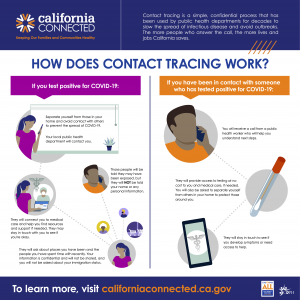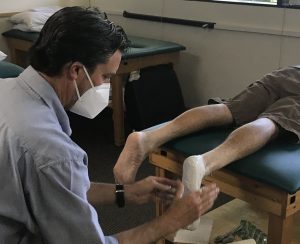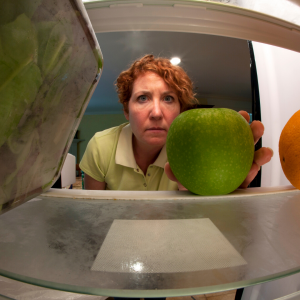Tracing the Origin of COVID-19 Infections With Contact Tracing
You may have read or heard about ‘Contact Tracing’ in the news recently. Contact tracing is a well established disease control measure that has been implemented by health departments worldwide. It has proven to be extremely effective at eradicating and controlling diseases through a system of identification, evaluation, education, and early treatment. Public health entities have historically been responsible for conducting case evaluation and contact tracing. With the global impact of COVID-19 we are now seeing employers and private health networks also taking part in contact tracing as a way to protect their workforces and prevent the spread of the virus. Both Massachusetts and California have been early adopters of COVID-19 contact tracing.
Examples of previous disease outbreaks during which these measures were effectively employed include Tuberculosis, Measles, Hepatitis A, and Smallpox. In Africa, contact tracing has been credited for the eradication of Ebola. These well-established disease control measures are now a key strategy for preventing further spread of COVID-19.
To combat each of these diseases public health workers must identify infected persons, trace who may have been in prolonged contact contact with them, and follow up by encouraging isolation of those infected. This often involves extensive phone interviews, in person visits, and most recently technology. Public health workers involved in contact tracing also provide disease education, ensure medical treatment is obtained by the patient, and when available, implement immunization programs for the surrounding community. While you don’t need a medical degree to provide contact tracing, it does require specialized training and organization of available resources to successfully implement. Successful contact tracing can help communities maintain economic stability during pandemics by preventing complete lockdowns, allowing healthy members of the community to continue to conduct business and provide services.
What can you expect if a contact tracer calls you?
Case investigation of COVID-19 positive patients includes an interview by a public health employee to help the patient trace back and recall locations where they may have had close contact with others and then identify who may have been exposed. The public health staff in turn notifies the possibly exposed individuals without identifying the name or details of the infected patient. In California, those found to be at risk of exposure through contact tracing will be offered free COVID-19 testing, encouraged to socially distance for 14 days after their exposure, and be monitored for symptoms. If they do develop symptoms or test positive they should promptly isolate themselves, seek medical evaluation, and notify public health staff.
Should you cooperate with contact tracing if contacted?
You may have read about resistance to participating in contact tracing and have concerns about privacy. Health information collected during contact tracing falls under the same healthcare privacy laws that we at SDSMFHC and all health care providers must follow. In addition, California has some of the most aggressive data privacy laws in the nation. That said, this video explains some of the potential scenarios that cause worry. At this point, participation is voluntary, data is to be anonymous and will not be stored on a central server that corporations or the government can easily access. Your identity and personal information will not be divulged by contact tracing public health workers.
The benefit to contact tracing is it’s tried and true efficacy. Most recently, in South Korea, contact tracing was able to identify Patient #31 who was found to be the origin of one-half of the coronavirus cases in that country. That is powerful information that if found quickly can prevent potentially devastating consequences for individuals and the community. Contact tracing helped identify those affected, early identification of viral reproductive trends, and helped South Korea determine appropriate public health measures. In general, South Korea is credited with the early containment of COVID-19 despite the recent pockets of the virus’s resurgence.
Contact tracing helps keep you safe by alerting you to a possible COVID-19 exposure from others who may have tested positive. If you find out you have been exposed, let us know so we can help you monitor for symptoms and provide early intervention which is so important in the most severe cases. Contact tracing allows us to learn more about how COVID-19 is spread and implement any additional measures in our clinics that may be necessary. Given that this is a novel or new virus we still have much to learn about its behavior and best practices to curtail it.
California Connected is a great resource on contact tracing, where you can get more information and perhaps even explore how you can become a contact tracer. You can download the above infographic here.
Move Better With Orthotics
Do you have foot, ankle, knee, hip or back pain? If so you may be a good candidate for custom foot orthotics. The nursery rhyme about the knee bone being connected to the leg bone, and the leg bone being connected to the ankle bone is absolutely correct. An ankle, knee or hip can be affected by the way the bones in between them are connected or misaligned. Misalignment can cause a variety of problems including unnecessary wear on the joints and strain on ligaments and tendons, all resulting in pain.
You may have tried store bought or ‘off the shelf’ orthotics but there are significant differences in custom versus ‘off the shelf’ orthotics. Custom orthotics are:
- Made by completing a plaster cast of your foot, so it fits your foot and your foot only. Any differences in your right or left foot are also addressed.
- Constructed of higher quality materials, are more durable, and last on average 4-6 years. Off the shelf orthotics typically need to be purchased every year.
- Typically easier to ‘break in’ and more comfortable since they are designed specifically for your feet.
- Designed with your specific needs in mind, making them more effective in eliminating pain, restoring normal foot biomechanics and improving function.
- Can be modified to meet the specific demands of activities the patient or athlete needs to perform, such as walking, running, cycling, or lateral movements used in soccer, tennis and other sports.
Custom orthotics are available at SDSM in our Physical Therapy Department. The cost for custom orthotics is $295.00 and includes a bio-mechanical and gait analysis, plaster casting of both of your feet, and handouts for home stretches and exercises if needed. The casts are then sent to a lab which makes them according to our specifications. In 7-10 business days your orthotics are usually ready and we’ll make sure the orthotics fit and discuss the break in process at a follow up appointment.
A doctor’s prescription is not needed, simply call 619-229-3910 to make an appointment!
Stress: The Role of Nutrition and Antioxidants
As COVID-19 continues to affect our communities, many are feeling emotional wear and tear of not knowing when or if life will return to what we consider normal. There are increased reports of anxiety and depression across the health spectrum, yet mental health has barely made the news. Especially of concern are those living in isolation due to closed community and resource centers, those with physical and mental health challenges, the elderly, and those with Alzheimer’s or caring for those with Alzheimer’s. By and large, humans have better mental health with the enrichment of the community of others, and when well nourished. Our bodies and brains rely on hormones to help us feel happy and the production of these hormones depends largely upon nutrients found in food. Not only are a balance of macronutrients, the carbs, protein, and fat important to mood management, but so are fruit and vegetable intake. Recent nutrition research has indicated that fruits and vegetables can improve mood and specifically feelings of optimism. We could certainly use a little more optimism right now.
It sounds too simple to just eat produce and feel better, but that is what a body of research has found. Those most closely adhering to a Mediterranean style diet had a 98.6% lower annual rate of developing depression compared to those with the least adherence to this plant focused diet. Most research suggests seven to eight servings of fruit and vegetables per day to create the best results but this study found even just eating 1 serving a day could turn a frown upside down. If seven to eight servings of fruit and vegetables sounds daunting, start with just four to five servings. One main dish salad will provide 4-5 servings of vegetables, as will a plate of zucchini noodles with marinara sauce, an acai bowl, or a carefully crafted smoothie.
What is it about fruit and vegetables that improve mood?
Moods are dependent on several factors: healthy blood sugar levels, feel good hormones like dopamine and serotonin, and healthy sleep patterns to name a few. Swings in blood sugar can create inflammation, lack of energy, and lack of healthy neurochemicals like dopamine, GABA, and serotonin. The lower glycemic nature of vegetables and fruits (compared to the ice cream or chips you crave when stressed), helps manage blood sugar and is related not only to the lower carb load. The fiber in fruits and vegetables creates satiety and slows the uptake of glucose into a steadier stream. Sweets, alcohol, and refined carbohydrates have more of a firehose approach to raising blood sugar. In addition, foods like broccoli and citrus fruits contain Vitamin C that is necessary for the body to make serotonin.
At one time or another we’ve all experienced that crash that comes from low blood sugar. Low blood sugar can occur from not eating frequently enough or from ingesting too many simple carbohydrates or sugars. Simple sugars raise our blood sugar rapidly, causing an increase insulin that helps blood sugar to drop quickly. Our energy levels and the production of healthy neurochemicals, or good mood hormones, follow the rise and fall of blood sugar. In fact, serotonin has a role in the pancreas for healthy insulin production so when blood sugar is plummeting, often so are our moods. By replacing sweets with fresh fruit like apples or berries and getting more fiber from vegetables, blood sugar remains more stable and less likely to crash.
In addition to providing good moods, the healthy mood hormone serotonin has been found to act as an antioxidant in tissues outside of the brain. Serotonin can be spared for use in the brain to support good moods when we consume antioxidants from fruits and vegetables.
Inflammation is a catch-all word that describes pain, discomfort, degradation, or irritation in tissues that we might not even feel. Inflammation that is caused by ingesting too many simple sugars creates unstable molecules called free radicals. In an effort to stabilize themselves, these free radicals will ‘borrow’ parts of molecules or even cells. In cardiovascular disease, we see free radicals oxidize or damage LDL molecules carrying cholesterol in the blood stream. Once oxidized, specialized white bloods cells then incorporate these damaged LDL’s into artery plaque. Antioxidants found in various various fruits and vegetables can ‘donate’ a part of themselves to stabilize these free radicals and spare LDL damage. We see this type of oxidative damage throughout the cardiovascular system, including in the brain where it is thought to precede metabolic changes which can lead to Alzheimer’s Disease.
Healthy sleep patterns allow the body to rest and restore itself, but here too, antioxidants may play a role. Sleepers getting 7-8 hours a night had higher levels of the antioxidants Vitamin C, Vitamin D, and the carotenoids. Short sleepers getting only 4-5 hours each night had lower levels of these antioxidants and higher levels of inflammatory compounds like C-reactive protein and uric acid. We don’t yet know if antioxidants cause more sleep, work in tandem with sleep, or if sleep spares these nutrients. However, this is a strong association that more research could help us understand.
Where do you start?
Keep it simple, know a few serving sizes, and consider a couple of food rules. Eating fruits and vegetables throughout the day is preferred, but if you can only cram them into one meal–it’s better than nothing!
- Start by adding some berries into your breakfast. One handful of berries is about 1/2 cup or the size of a cupcake wrapper and is 1 serving.
- The ‘have a main dish salad at lunch or dinner’ rule. It simplifies the answer to ‘what’s for dinner’ and knocks out 3-5 servings of veggies at one meal.
- Have a piece of fruit as an afternoon snack. One large apple is 2 servings.
- Prefer veggies for a snack? Two cups of raw veggies fits into a sandwich size ziplock and provides 2 servings. You could make it a practice to eat a bag of veggies each afternoon before you finish work or start making dinner.
- Try the ‘we eat vegetables at dinner’ rule. Make two different vegetables so there is variety. Two cups of cooked vegetables is 4 servings and 2 cups of raw is 2 servings.
Some fruit and vegetables pack more antioxidants and fiber than others.
To get the most antioxidants for your efforts, include leafy greens like spinach, romaine, and kale. Sweet potatoes, carrots, beets, berries, apples, and citrus fruits offer antioxidants and fiber. Basically, any piece of produce that has a bright color contains antioxidants. One exception would be cauliflower. White cauliflower offers the same glucosinates that fight cancers as broccoli, kale, and brussel sprouts. Grab a purple cauliflower and you will also get anthocyanins. Anthocyanins are part of the flavone family which has been found to decrease cardiovascular risk and protect the integrity and flexiblity of the arteries.
The bottom line.
Nutrition is a powerful tool you can use to help with stress, anxiety, and depression. A well balanced diet looks a little bit different for everyone and may include more or less of some foods. But the truth is that your body is made from or will make things from everything you eat. So making the healthiest food choices will go a long way to helping you achieve a happier outlook.
More on food and mood:
Raw Fruits & Vegetables Associated With Better Mental Health
Lettuce Be Happy
Evolution of Well-Being After Increase in Fruit and Vegetables
Stay safe San Diego.
No matter your particular health concern, SDSM continues to be here for you. Don’t put off important checks on your health especially if you have diabetes, asthma, COPD, heart problems, impaired immune function, difficulty getting enough sleep, or are experiencing high levels of stress. We know that health problems still happen and you may need an in-person appointment for injuries, general physicals, annual health assessments, and management of chronic conditions. You can trust that we disinfect between each patient interaction using CDC approved disinfectants and practice all recommended social distancing and infection control guidelines. We are also experts in telemedicine where we can coach you on self-care at home, check in regarding medications or necessary prescriptions, or evaluate the need for an in-person visit. We still recommend that cold/flu/COVID-19 symptoms and patients at increased risk of complications from COVID-19 are best addressed through a convenient telemedicine appointment.
Please call us if you feel ill. Whether you have been practicing stay at home measures, traveling, or out in the community, take care to wear a mask, practice a minimum of six foot social distance from others, wash your hands frequently, and avoid touching your face, mouth, and nose. Working together, we can help you to stay safe, healthy, and thrive.
Yours in health,
The Physicians and Staff of San Diego Sports Medicine and Family Health Center

